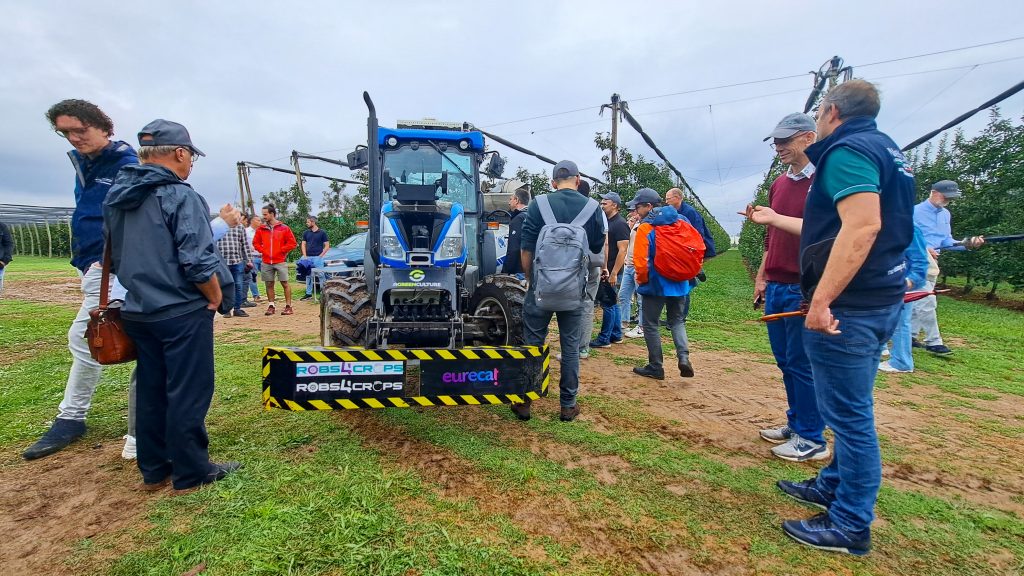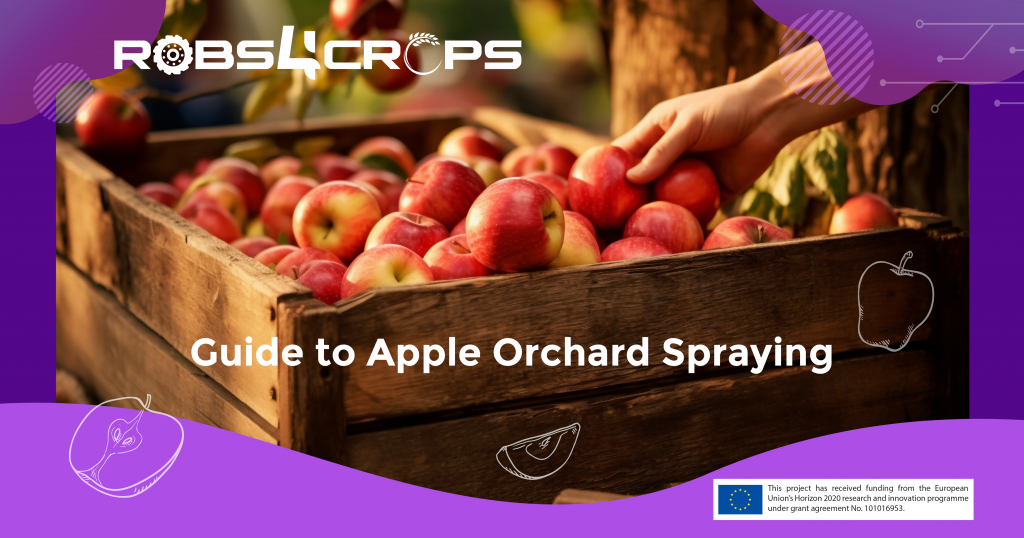How can apple orchards be effectively managed to ensure healthy trees and abundant harvests?
One critical component of orchard management is spraying, a process designed to protect apple trees from pests, diseases, and other threats. Let’s explore the technology behind apple orchard spraying, focusing on the machinery, techniques, and innovations that make it all work.
The Pesticide Dilemma in Apple Farming
Public concern over the health and environmental impacts of agricultural pesticides is growing. Yet in apple production, using pesticides isn’t optional—it’s essential to meet consumer demands.
Apple growers share public worries about pesticide use, but viable non-chemical alternatives have yet to emerge. As a result, apples often require 10 to 15 pesticide applications annually, making them among the most pesticide-dependent crops. This heavy reliance on chemicals also drives up costs for pesticides, labor, and equipment, adding to the burden on apple farmers.
Orchard spraying helps protect against risks by applying pesticides, fungicides, and other treatments to the trees. The goal is to maintain a balance: applying enough treatment to keep pests and diseases at bay while minimizing environmental impact and ensuring food safety.
The Process of Orchard Spraying
While each crop has unique needs, there are common principles for effective pesticide application across various situations:
- Identify the Pest(s): Determine which pests are present and assess whether spraying is necessary based on damage thresholds.
- Choose the Right Pesticide: Select a pesticide specifically designed to target the identified pest(s).
- Select Appropriate Equipment: Use the correct type and size of spray equipment and nozzle for even and effective application.
- Time the Application Correctly: Apply pesticides at the optimal time and under favorable conditions to maximize efficacy.
- Ensure Equipment Accuracy: Regularly check and calibrate equipment to ensure proper distribution and the correct application rate as indicated on the pesticide label.
Types of Spraying Equipment

Several types of equipment are used in apple orchard spraying, each designed to meet specific needs. Let’s look at some of the most common types:
1. Airblast Sprayers
Airblast sprayers are among the most widely used machines in apple orchards. They consist of a tank for holding the spray solution, a pump to pressurize it, and a fan to create a powerful airflow. As the solution is pumped through nozzles, the fan disperses it in a fine mist, allowing it to reach deep into the canopy of apple trees. Airblast sprayers are favored for their efficiency and ability to cover large areas quickly. They are but not that efficient. More than half of the spray misses its target, with the excess landing on the ground or dispersing as “drift.” This drift can travel long distances, affecting family members, farmworkers, and nearby communities.
2. Disease- Warning Systems
Disease-warning systems offer a promising way to reduce pesticide use and costs for apple growers. These systems track weather conditions—such as relative humidity, rainfall, and temperature—to determine when disease risks are high, allowing growers to time their pesticide sprays more precisely. Traditionally, apple growers have applied pesticides according to a pre-set calendar, regardless of actual disease risk. But why rely on weather-based timing for spray applications? The benefit is fewer sprays per season, as you avoid applying pesticides when the risk of disease is low. By triggering sprays only when there’s a genuine risk of an outbreak, disease-warning systems can lead to significant reductions in pesticide use and cost savings for apple producers.
3. Tower Sprayers
Tower sprayers are a variation of airblast sprayers designed specifically for orchards with taller trees. They feature vertically oriented fans that blow the spray solution upward, ensuring coverage for the entire canopy. This design is especially useful for high-density orchards where traditional airblast sprayers might not reach the upper branches.
4. Drones for Spraying
Spray drones are equipped with many components found in ground sprayers, such as tanks, pumps, hoses, and nozzles to disperse pesticides. Typically, these drones have tank capacities ranging from two to five gallons, with application rates between one and two gallons per acre. Some drone sprayers can be programmed to return to their home base to refill the tank when it’s empty, allowing for continuous operation with minimal downtime. This combination of features makes spray drones an efficient and adaptable solution for agricultural applications.
How does Robs4Crops fit in?
Did you know that some of the world’s finest apples are grown in Catalonia? But traditional orchard spraying is labour-intensive and prone to chemical waste due to over-application or spray drift.
The Spanish pilot of the Robs4Crops project is perfecting the technique of apple orchard spraying through an innovative combination of technologies, including a retrofitted tractor, a self-driving sprayer, a new perception unit, a terminal, and an AGC Box. The initial trials focused on the Granny Smith variety, but now the testing is solely conducted in the GALA VENUS variety field, which covers 15 hectares.
Besides optimising apple orchard spraying, Robs4Crops is also perfecting table grape spraying. Utilizing advanced technology, including a retrofitted tractor and a CEOL robot, equipped with smart implements like a Perception Unit, Smart Nozzles, a Hydraulic System, a Terminal, and an AGC Box, the Greek pilot ensures precise spraying.
Conclusion
Apple orchard spraying is a complex and essential process for maintaining healthy apple orchards. The technology behind it has evolved significantly, with new equipment and techniques offering improved efficiency, precision, and environmental sustainability. From airblast sprayers to drones, the variety of equipment available allows orchardists to choose the best solutions for their specific needs.
By embracing innovation and leveraging technology, apple orchard managers can ensure that their trees remain healthy, productive, and free from pests and diseases. This commitment to technology-driven spraying ultimately contributes to a more sustainable and prosperous apple industry.

